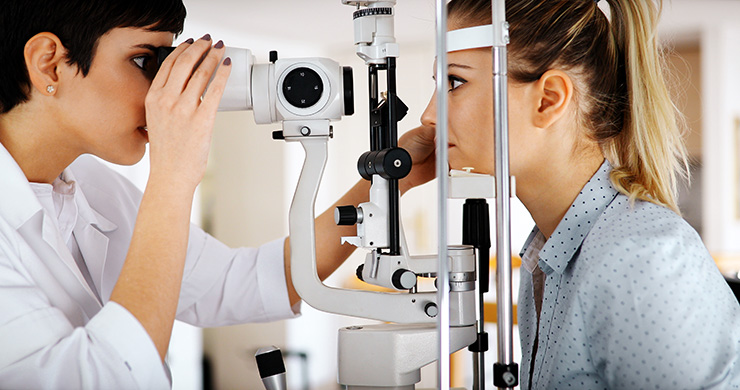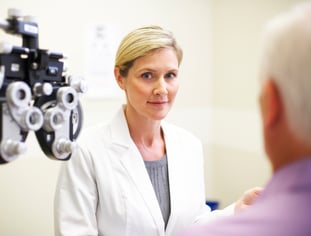Comprehending the Duty of Your Eye Doctor in Maintaining Vision
Comprehending the Duty of Your Eye Doctor in Maintaining Vision
Blog Article
Checking Out the Most Current Technological Innovations in Optometry and What They Mean for Optometrists
In the ever-evolving area of optometry, recent technical improvements are reshaping just how specialists come close to eye treatment. From the accuracy of Optical Comprehensibility Tomography to the nuanced insights supplied by AI-driven analysis tools, these innovations are establishing brand-new standards in person assessment and treatment. Teleoptometry is poised to redefine access, guaranteeing that expertise goes beyond geographical constraints. As these developments penetrate the method, eye doctors are confronted with the difficulty of embracing these tools to enhance individual outcomes. Yet, the inquiry remains: exactly how will these technical changes redefine the functions and responsibilities within the occupation?
Innovations in Diagnostic Devices
Progressing the area of optometry, technologies in analysis devices have actually transformed the means eye care experts assess and identify visual disabilities and eye problems. The past years has actually experienced substantial technological improvements, making it possible for more detailed and exact evaluations.
One more trick innovation is the introduction of sophisticated corneal topography systems, which map the surface area curvature of the cornea with accuracy. These devices are specifically useful for fitting get in touch with lenses and diagnosing corneal conditions. Additionally, digital retinal imaging has actually transformed traditional ophthalmoscopy, offering in-depth, scenic sights of the retina that promote detailed visual examinations.
The development of wavefront aberrometry has additionally been important, enabling the evaluation of refractive mistakes with unequaled precision (Optometrist Chino). This innovation assists in personalizing corrective lenses and improving surgical results for refractive surgical treatments. Collectively, these diagnostic innovations encourage eye doctors to provide remarkable person treatment, guaranteeing very early treatment and tailored treatment techniques, ultimately boosting visual health results
AI in Individual Monitoring
Structure on the structure of advanced analysis tools, the consolidation of artificial knowledge (AI) in client monitoring stands for a transformative leap for optometry. AI systems are significantly employed to boost effectiveness, accuracy, and customization in client treatment.
In addition, AI-driven platforms help with structured client communications and administrative procedures. Automated organizing, digital examinations, and personalized follow-up plans not just improve patient complete satisfaction but also enhance time monitoring for professionals. These systems can triage patients based upon the necessity of their conditions, making sure that those in vital need get punctual focus.
Additionally, AI boosts decision-making by providing optometrists with evidence-based suggestions and treatment pathways. By incorporating information from digital health and wellness documents, AI tools use understandings that notify clinical decisions, decreasing the threat of errors and improving individual end results. As AI remains to evolve, its role in patient management will likely broaden, reshaping the landscape of optometric care.
Breakthroughs in Retinal Imaging
In the realm of optometry, retinal imaging has observed amazing technical advancements that are enhancing diagnostic capabilities and individual treatment. Developments such as Optical Comprehensibility Tomography (OCT) and fundus digital photography have reinvented exactly how optometrists picture and assess the retina. OCT, particularly, gives high-resolution, cross-sectional photos of the retina, permitting the in-depth evaluation of its layers. This capability is invaluable for early detection and monitoring of problems like glaucoma, diabetic retinopathy, and age-related macular deterioration.
Boosted imaging methods like OCT angiography are more Recommended Site refining diagnostic precision. Eye Doctor. Such improvements facilitate the identification of min retinal adjustments that visit this site right here can indicate illness progression.
Additionally, advancements in expert system are increasing retinal imaging by enabling automated evaluation of huge datasets. These systems assist eye doctors in recognizing patterns a measure of pathology, thus enhancing analysis precision and efficiency. Jointly, these developments are changing retinal imaging right into a foundation of contemporary eye care, enhancing results and broadening restorative possibilities.
Teleoptometry's Expanding Role
Teleoptometry is increasingly becoming a vital component of eye treatment, driven by advancements in electronic interaction and diagnostic tools. This is particularly helpful in country and underserved locations where accessibility to specialized eye care is usually minimal.
The assimilation of expert system (AI) further improves teleoptometry, enabling the analysis of visual data and helping in the detection of ocular conditions such as glaucoma and diabetic retinopathy. AI-powered algorithms can rapidly translate complicated imaging data, offering eye doctors with beneficial understandings that strengthen professional decision-making.
Additionally, teleoptometry supports connection of treatment through smooth integration with electronic health and wellness documents (EHRs), permitting eye doctors to keep thorough person histories. When seeking advice from with different specialists., this ensures that patients receive customized and consistent care even.
In spite of these benefits, difficulties continue to be, consisting of making certain information protection and handling person assumptions. Teleoptometry represents a considerable stride towards even more easily accessible, efficient, and patient-centered eye treatment. As modern technology evolves, its function is positioned to increase further.

Future Patterns in Eye Treatment
A myriad of cutting-edge patterns is readied to improve the future of eye treatment, driven by technical developments and the evolving demands of individuals. One substantial trend is the assimilation of artificial intelligence (AI) in diagnostics, which assures to improve the precision and performance of eye exams. AI formulas can examine large quantities of information from retinal photos, possibly finding conditions like diabetic retinopathy and glaucoma earlier than conventional approaches.
In addition, tailored medication is obtaining grip in optometry, with genetic screening notifying personalized therapy strategies. This approach aims to maximize patient results by customizing interventions to individual genetic accounts. Wearable technology, such as clever call lenses, is additionally on the horizon, supplying real-time surveillance of intraocular pressure or sugar Visit Website levels, thus offering continuous insights into systemic and ocular health and wellness.
The adoption of enhanced truth (AR) and digital fact (VIRTUAL REALITY) in training and patient education is an additional arising trend. These modern technologies provide immersive experiences that can improve understanding and abilities both for patients and eye doctors. As these fads evolve, optometrists need to stay abreast of technical improvements to provide innovative treatment, guaranteeing improved person outcomes and complete satisfaction in the vibrant landscape of eye treatment.
Conclusion

Jointly, these analysis innovations encourage eye doctors to deliver remarkable patient care, making certain early intervention and tailored treatment methods, ultimately improving aesthetic health results.

As these modern technologies continue to progress, optometrists should adapt and include them into technique, inevitably enhancing workflow efficiency and boosting the criterion of eye treatment provided to people.
Report this page